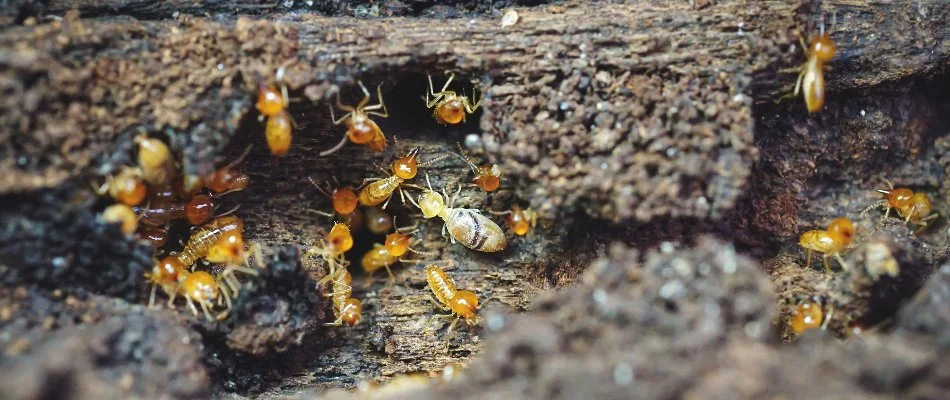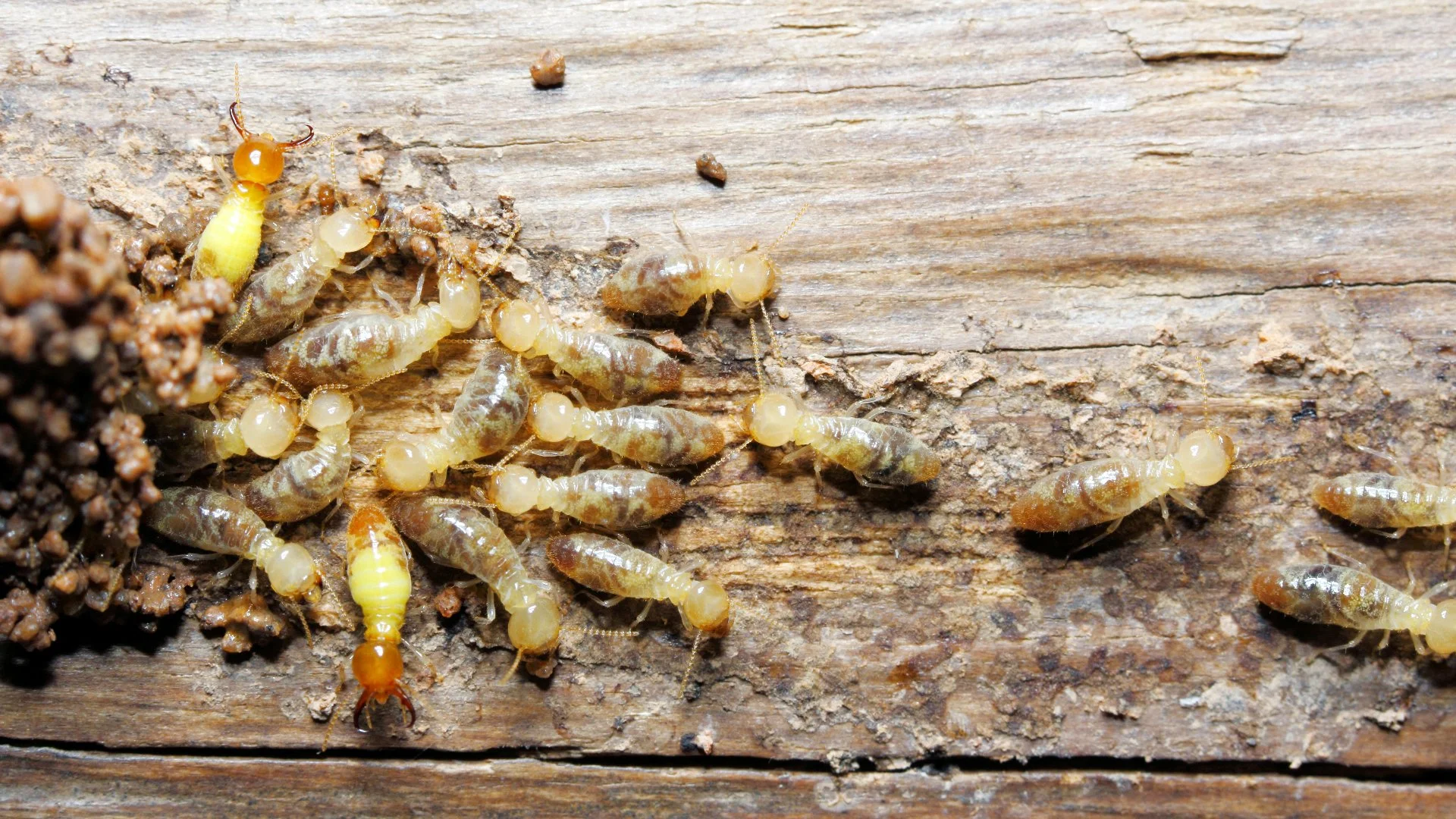Termites, those small but remarkably destructive creatures, have long captured the fascination of scientists and homeowners alike. In this comprehensive essay, we embark on a journey to unravel the complexities of termite biology, behavior, and their profound impact on our lives in Texas. From understanding their life cycle to delving into their dietary preferences and distinct characteristics, we aim to provide you with a profound understanding of these silent invaders. Additionally, we'll shed light on Purple Care's expertise in termite prevention and eradication, showcasing the science and technology behind our solutions.
The Extraordinary Termite Lifecycle

Termites, often referred to as "silent destroyers," embark on an incredible journey that begins with a humble egg. These tiny creatures undergo a metamorphosis that rivals some of nature's most fascinating transformations. The life cycle of a termite encompasses multiple stages, each with a unique role within the colony.
At the heart of the termite colony are the workers, tirelessly toiling to obtain food and build intricate tunnels and nests. They are the primary culprits behind the damage inflicted on wooden structures. Astonishingly, workers can live for several years, constantly at work to sustain their colony.
However, it's the queen termites who steal the spotlight with their extraordinary longevity. Under optimal conditions, queen termites can live for several decades, consistently laying eggs to ensure the growth and sustainability of their colony. This remarkable feat showcases the wonders of nature's design.
Understanding the intricacies of the termite lifecycle is crucial in devising effective termite control strategies. Identifying the various castes within the colony and their roles allows pest control experts to target the most destructive members effectively.
Termites' Dietary Preferences: Beyond Wood
While it is widely known that termites have a strong affinity for wood, their dietary preferences extend beyond wooden structures. Termites are known to feed on a variety of materials, including paper, books, and insulation. What truly sets them apart in the insect world is their unique ability to break down cellulose, a primary component found in wood and plants.
The secret behind this extraordinary capability lies within their specialized digestive system, which houses microorganisms that enable termites to efficiently extract nutrients from cellulose-rich materials. This unique adaptation makes them formidable adversaries for homeowners and poses significant challenges in termite control efforts.
Termites vs. Ants: Key Distinctions
One common misconception among homeowners is the difficulty of distinguishing termites from other insects, particularly ants. While termites and ants may share some superficial similarities, a closer examination reveals distinct features that set them apart.
Termites possess straight antennae, a consistently shaped waist, and, for the winged varieties, two pairs of equally sized wings. These distinctive characteristics play a pivotal role in distinguishing termites from other household pests.
Comparing termites to ants is understandable due to their physical resemblances. Both insects can produce winged individuals during specific reproductive phases. However, winged termites can be identified by their possession of two equal-length pairs of wings, a feature not shared with ants. Additionally, the straight antennae and robust waists of termites stand in stark contrast to the elbowed antennae and slender waists of ants.
Termites' Activity Patterns: Year-Round Tenacity
Termites are renowned for their resilience, remaining active year-round. While they may remain hidden from sight, their diligent efforts continue throughout the seasons. However, homeowners are most likely to spot them during the swarming season in spring.
The swarming season marks a crucial phase in the reproductive cycle of termites. During this period, reproductive termites take flight to establish new colonies. These swarms are often visible around homes, leading to increased awareness of termite presence. Understanding these activity patterns is essential for homeowners to detect potential infestations promptly.
It's highly recommended to have your property inspected once a year for termites to catch them before they cause extensive damage.
DIY Termite Prevention: A Growing Trend
In today's digital age, do-it-yourself (DIY) termite prevention methods are gaining popularity among homeowners. These methods often involve implementing practices like maintaining a moisture-free environment within homes, addressing water leakages promptly, and using termite-resistant building materials.
While DIY approaches can act as initial deterrents, it is crucial to recognize their limitations. Termites are persistent pests, and tackling them without professional expertise may not yield the desired results. Termite control often requires comprehensive solutions that address the unique challenges posed by these insects.
Purple Care's Expertise in Termite Control
Purple Care stands as a beacon of expertise in the realm of termite control. Our commitment to addressing termite concerns goes beyond the dissemination of knowledge. We utilize advanced inspection processes that harness state-of-the-art tools to detect potential infestations at their nascent stages. Early detection is pivotal in preventing extensive damage to your property.
Our soil treatments are meticulously curated, taking into account specific soil types and termite species. This tailored approach ensures that our treatments are not only effective but also environmentally responsible. We prioritize the safety of your property and the surrounding ecosystem.
Not to be overshadowed, our bait systems are more than mere traps. They function as vigilant sentinels, offering continuous surveillance of termite activity. Real-time data feedback allows us to monitor and respond to termite infestations proactively. This proactive approach is the cornerstone of our success in termite prevention and eradication.
The Science and Technology Behind Purple Care's Solutions
At Purple Care, we leverage science and technology to deliver cutting-edge termite control solutions. Our experts are equipped with the latest tools and knowledge to combat these formidable pests effectively. We understand that each termite infestation is unique, requiring tailored solutions.
Our commitment to sustainable pest control extends to our termite control services. We strive to minimize environmental impact while safeguarding your property. By harnessing the power of science and technology, we ensure that our methods are both efficient and eco-friendly.
In conclusion, termites may be small, but their impact on homes and properties can be colossal. Understanding their biology, behavior, and distinct characteristics is essential for homeowners seeking effective termite control. Purple Care's expertise in termite prevention and eradication is grounded in science and technology, offering comprehensive solutions that protect your property while respecting the environment. When it comes to termites, knowledge is power, and Purple Care is your trusted partner in the battle against these silent destroyers. Our termite control service is available in Fort Worth, Arlington, Weatherford, TX, and other nearby areas. Call us today at (817) 880-6052 to sign up!




Comments (0)
Thanks for your comment!
Thanks for your feedback! Your comments have been successfully submitted! Please note, all comments require admin approval prior to display.
Error submitting comment!
There is a problem with your comment, please see below and try again.